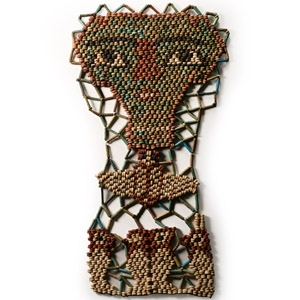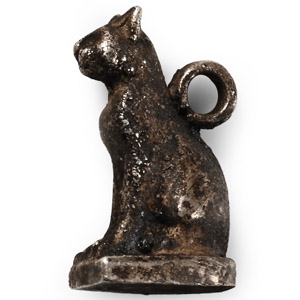Home > Auctions > 26 November - 1 December 2024
Ancient Art, Antiquities, Natural History & Coins
Ex Stair Galleries, New York, USA.
From an important collection of icons.
Accompanied by an academic report by Dr Raffaele D’Amato.
This lot has been checked against the Interpol Database of stolen works of art and is accompanied by search certificate number no. 12341-224608.
Cf. for similar icons, the icon of Palazzo Pitti, Firenze, inventory no.1890 no.9323; Piatnitsky, Y., Baddeley, O., Brunner, E., Mundell Mango, M., Sinai, Byzantium, Russia, Orthodox Art from the Sixth to Twentieth Century, London, 2000, fig.R25 p.273; Dumitrescu, M., ‘The Hagiographical Icon of Saint Nicholas in the Church of Michael the Brave from Ocna Sibiului. Iconographic, Artistic and Technical Issues’ in Anastasis. Research in Medieval Culture and Art, Vol.VI, Nr.1, May, 2019, pp.59-78; for the church garments see Houston, M. G., Ancient Greek, Roman and Byzantine Costume and Decoration, London, 1977, pp.162ff., esp.fig.72.
Saint Nicholas lived in 4th century A.D. and was the bishop of Myra, in the Roman Asia Minor. Because of the many miracles attributed to his work, his cult was widespread in the Orthodox world and he is known as Nicholas the wonderworker. His reputation as a secret gift-giver (such as putting coins in the shoes of those who left them outside, or the dowry given to three maidens saving them from prostitution) created a model for Santa Claus. The veneration of the saint, who participated in the Council of Nicaea of 325 A.D., began very soon after his death.
Ex property of a London lady, part of her family's collection.
Accompanied by an academic report by Dr Raffaele D’Amato.
This lot has been checked against the Interpol Database of stolen works of art and is accompanied by a search certificate no. 11543-196361.
See Weizmann, K. et al., The Icon, New York, 1982; Popescu, G.A., Cristiani d'Oriente, spiritualità, arte e potere nell'Europa Post-Bizantina, Milano, 1999; Geelmuyden Bulgurlu, V., Ulf, A., Lindgren, N., Bodin, H., Balicka-Witakowska, E., Five essays on icons, Stockholm & Istanbul, 2005, fig.6, p.31.
This splendid specimen was probably originally housed in an aristocratic Russian home. The icon of the Virgin Mother of Vladimir with the infant Jesus (the original preserved in the Tretyakov Gallery, Moscow), probably the most famous icon of all of Russia, was thought to have been created in Constantinople in the early part of 1100s. This image is sometimes referred to as the ‘tenderness icon’, with artists attempting to show the close relationship of mother and son with their cheeks touching as they embrace.
Ex Henry's Auction, Berlin, Germany.
From an important collection of icons.
Accompanied by an academic report by Dr Raffaele D’Amato.
This lot has been checked against the Interpol Database of stolen works of art and is accompanied by search certificate number no.12343-224612.
Cf. for similar icons Popescu, G.A., Cristiani d'Oriente, spiritualità, arte e potere nell'Europa Post-Bizantina, Milano, 1999, cat.99.
Here, according to local Greek traditions, the icon is enriched with images of three important saints: among them St Pantaleimon, holding a child in his arms. According to the legend, one day the Saint found a dead child on the street who had been bitten by a snake, which was still beside the child’s body. Pantaleimon began to pray for Jesus to revive the dead child and to destroy the venomous reptile, believing that if his prayers were fulfilled he would become a follower of Christ. His prayers were fulfilled and the child rose up alive, and the snake died before Pantaleimon’s eyes.
Ed Jackson Auctions USA.
From an important collection of icons.
See Turtsova, N.M., The Entry of the Lord into Jerusalem. Series 'Russian icon. Images and symbols' (in Russian), St. Petersburg, 2014.
The scene, painted in the style of 19th century romantic painters, represents a well-known part of the Gospels that describe the entry of Jesus into Jerusalem. He makes a grand entrance into the city on a donkey to fulfil the prophesy of Zechariah, “Tell the city of Zion, look, your king is coming to you! He is humble and rides on a donkey and on a colt, the foal of a donkey.” Christ is followed by his disciples and in the background citizens wave palm branches.
From the Northamptonshire, UK, collection of J. Shaul.
Property of a Cambridgeshire, UK, gentleman.
The form of the woolly rhino’s skull and teeth had evolved to support its grazing lifestyle with its head dipped downwards towards the ground, even in its relaxed attitude. The skull is unusual in having both an extensively ossified nasal septum, probably evolved as a result of the heavy pressure on the horn and face when grazing, and a down-turned anterior region on the premaxilla that contacts the edge of the upper jaw. The shoulders were raised with a powerful hump, used to support the animal's massive front horn and also used for storing fat.
From a Cambridgeshire, UK, collection.
Mosasaurs (from the Greek for 'lizard') were aquatic dinosaurs which probably gave birth to live young.
From a Cambridgeshire, UK, collection.
From the Siberian Tundra.
Ex Arctic Antiques, Germany.
From the private collection of Commander Michael J Norman OBE AFC RN, Somerset, UK.
Accompanied by a copy of a certificate of origin from Germany.
Accompanied by a copy of the original purchase invoice (17,838.00 Euros).
This lot has been checked against the Interpol Database of stolen works of art and is accompanied by a search certificate no. 12353-225019.
See Guide to the Elephants (Recent and Fossil) in the British Museum (Natural History), BM, 1922, pp.35-47, for discussion.
Both tusks were recovered from the same place in the Siberian permafrost in 2016. The left tusk weighs an impressive 6.2 kg and the right tusk 6.02 kg. The mammoth lineage branched from the Asian elephant around 6 million years ago, and later on the Woolly Mammoth, Mammuthus primigenius, evolved in eastern Siberia. Woolly mammoths, being slightly smaller than living African elephants, were foragers and ate grass, as well as small, nutritious flowering plants that flourished in the environment where they lived. They may also have used their curved tusks to dig through snow and eat plants that other foragers couldn't get to.
From a Cambridgeshire, UK, collection.
Mariaud de Serres, Paris, 1990s.
Winged scarabs were often used as funerary amulets, and were believed to symbolise the rebirth and regeneration of the deceased. The Four Sons of Horus were deities responsible for protecting the deceased's internal organs. The jackal-headed Duamutef protected the stomach, the falcon-headed Qebehsenuef protected the intestines, the human-headed Imsety protected the liver, and the baboon-headed Hapy protected the lungs. These internal organs were often placed in canopic jars, each with the head of the respective Son of Horus. Amulets depicting these deities were placed within the mummy wrappings.
From the collection of a gentleman, acquired on the London art market in the 1990s.
From an early 20th century collection.
Cf. Andrews, C., Amulets of Ancient Egypt, London, 1994, item 29(c).
The cat was sacred to Bastet, a protective mother goddess and the daughter of the sun god Re. Amulets provided the wearer with the goddess's protection.
289 - 300 of 3419 LOTS

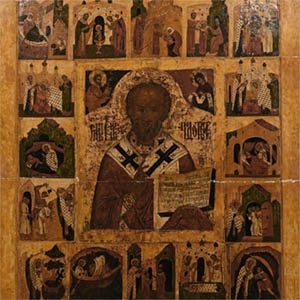
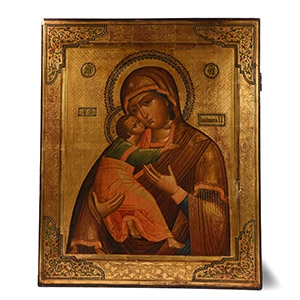

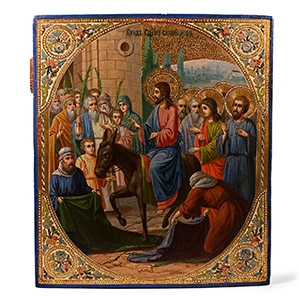
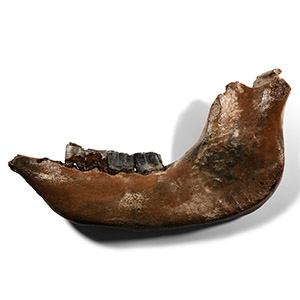
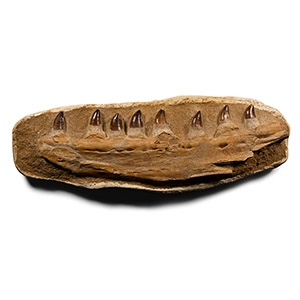
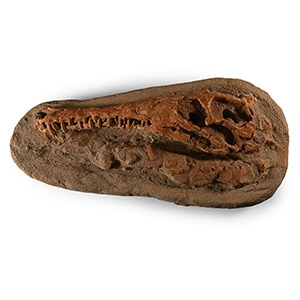
.jpg)
.jpg)
